13 Dog Breeds Without Separation Anxiety (with photos)
When it comes to selecting the perfect dog breed for your home, one factor that may weigh heavily on your decision is how well a potential pet can cope with loneliness. After all, most of us lead busy lives, and no one wants to be greeted with destroyed furniture or emotional upheaval after a day at work. Fortunately, several dog breeds are known for having low separation anxiety levels.
Greyhounds, Japanese Chins, and Basset Hounds are just a few examples of breeds that adapt well to alone time. These dogs are naturally independent and require only moderate exercise, making them perfect companions for those who work long hours or have occasional errands to run. Similarly, the Maltese, Shar-Pei, and Basenji breeds are content to entertain themselves while you’re away, ensuring peace of mind and a happy reunion upon your return.
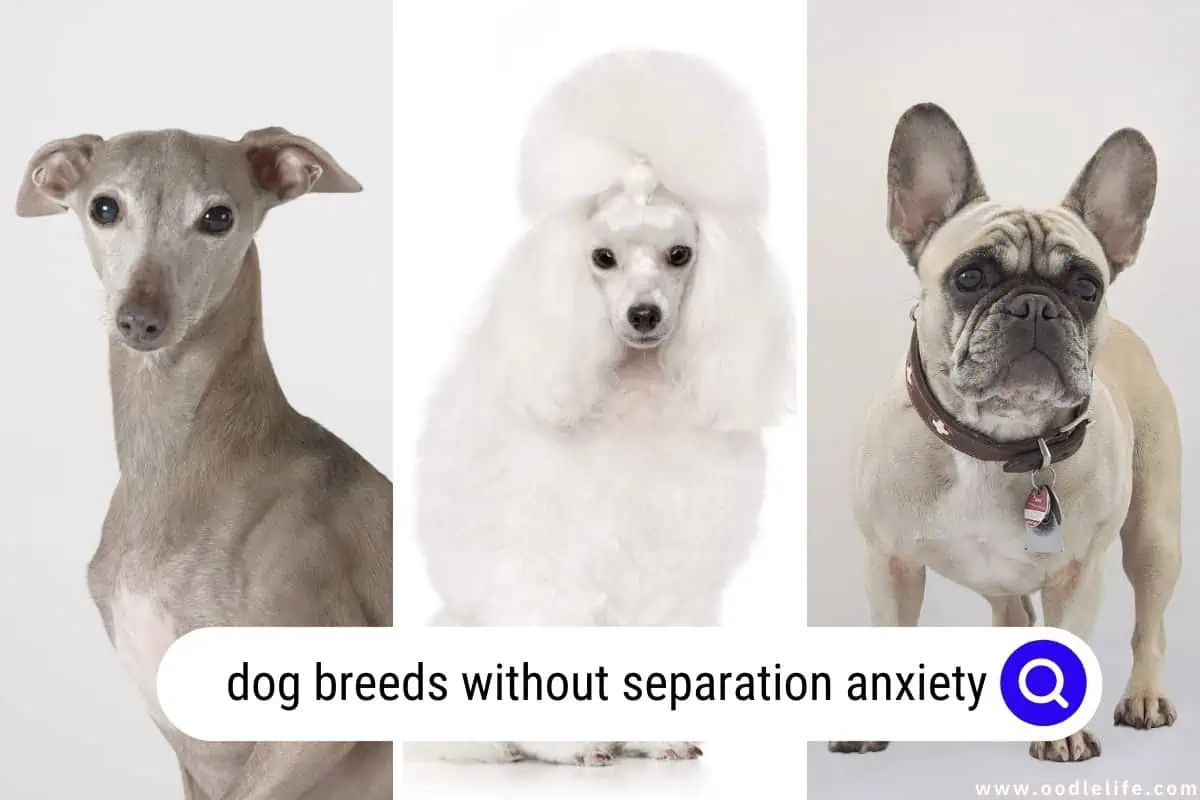
So, before you bring a furry friend into your life, consider breeds with low separation anxiety. They’ll be more likely to effortlessly adjust to your schedule, leading to a harmonious household and a lasting bond between you and your canine companion. Who knows – you might even find yourself getting a bit jealous of their ability to relax while you’re away!
Understanding Separation Anxiety

Causes of Separation Anxiety
Separation anxiety in dogs can be triggered by various factors, such as fear, aging, or abrupt changes in routine. For example, if a dog is suddenly left alone for extended periods after being constantly surrounded by their owner, it can lead to anxiety.
Some common causes of separation anxiety include:
- A change in the family’s routine or schedule
- Moving to a new home
- Loss of a family member or another pet
- Lack of proper socialization during the puppy stage
- A traumatic event or experience while alone
Symptoms of Separation Anxiety
Recognizing the symptoms of separation anxiety in dogs is essential for addressing the issue and finding ways to help your furry friend feel more at ease. Here are some common signs of separation anxiety:
- Excessive barking or howling when alone
- Destructive chewing, digging, or scratching
- Urinating and defecating in the house, despite being house-trained
- Attempting to escape from their confined area
- Pacing or restlessness while alone
- Excessive salivation, drooling, or panting
To spot separation anxiety, pay attention to your dog’s behavior after you leave the house. If some of these symptoms occur within 20 to 45 minutes of your departure, it’s quite likely that your dog is experiencing separation anxiety.
Remember, every dog is different – just like humans, they all have unique personalities. Some dogs might be more stoic and hide their anxiety more effectively, while others can be total drama queens and turn your living room into a chewed-up wasteland within minutes of being left alone. Don’t hesitate to reach out to a professional dog behaviorist or your vet for guidance if you suspect your pup is struggling with separation anxiety.
Preventing and Treating Separation Anxiety
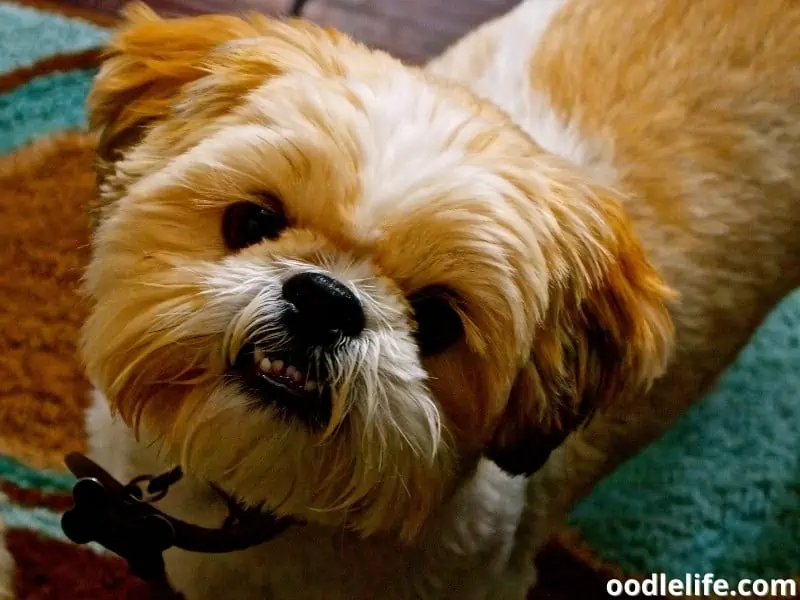
Training Techniques
Proper training is essential in preventing separation anxiety in dogs. Early socialization helps puppies learn how to handle their owners’ absence without stress. Remember that during socialization, the goal is to expose them to different environments, people, and animals so that they can develop proper coping mechanisms.
Crate training is one technique that can help dogs feel secure when left alone and can provide a safe, designated space to relax. Within the crate, provide chew toys to keep them mentally stimulated and occupied while you’re away. However, remember to introduce your pup to the crate gradually and never use it as a punishment.
Exercise and mental stimulation are crucial parts of a dog’s daily routine. Ensuring that a dog receives regular physical activity and engaging in activities that challenge their mind will help reduce boredom, which can often lead to destructive behaviors.
Desensitization
Desensitization is another effective method for reducing separation anxiety in dogs. This process involves gradually increasing the time you spend away from your dog, allowing them to become more comfortable with your absence.
Start by leaving your dog alone for short periods and gradually increase the duration as they become more confident. It’s essential to vary the length of time you’re away to avoid creating a predictable pattern.
In addition to increasing the time spent away, you can practice “absence cues” by performing actions that indicate your departure (such as picking up keys). Then, instead of leaving, continue with your routine at home. This helps your dog understand that these cues don’t always lead to your absence and reduces their anxiety.
Remember, it’s essential to remain patient and consistent during the desensitization process. In more severe cases of separation anxiety, consulting with a veterinarian or a professional trainer may be necessary to identify and address any underlying behavioral issues.
Paws for thought: While some breeds may naturally have lower separation anxiety levels than others, it’s crucial to remember that all dogs are individuals and could develop separation anxiety without proper training and prevention measures. So, grab those walking shoes, fill up the treat pouch, and let’s get to work on setting our furry friends up for success!
Dog Breeds with Low Separation Anxiety
Independent Dog Breeds
If you’re looking for a dog that can handle being alone, these independent breeds are a fantastic choice. Their low separation anxiety levels make them perfect for owners with busy lifestyles.
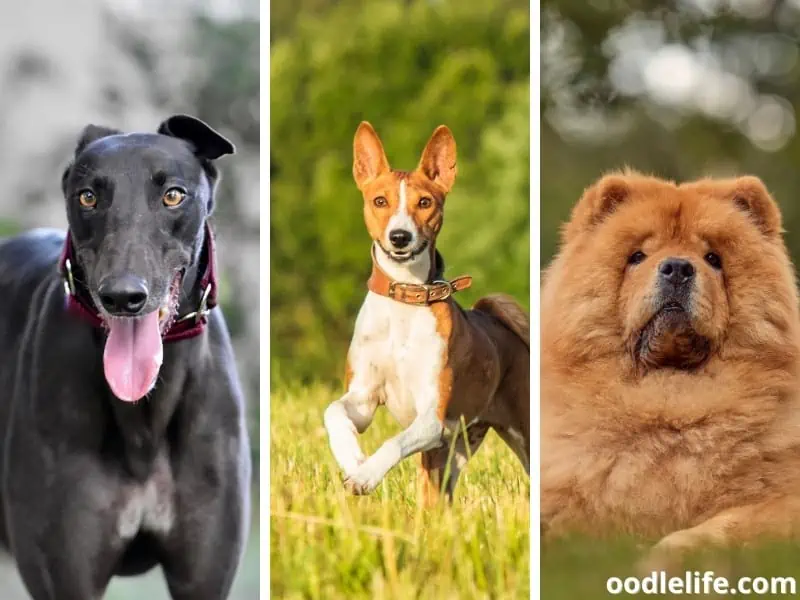
- Greyhound: Known for their racing history, Greyhounds are surprisingly low-energy dogs when they’re not on the track. They are affectionate but also enjoy downtime, making them great alone-time dogs.
- Basenji: This ancient breed is ranked high in intelligence and low in dependency. Their independent spirit means they won’t suffer if left alone for a few hours.
- Chow Chow: With a bear-like appearance and aloof personality, Chow Chows are happy on their own, as long as they have a cozy spot to lounge in.
Hypoallergenic Dog Breeds
These breeds produce fewer allergens and are ideal for allergy sufferers. The bonus? They also handle alone time well.
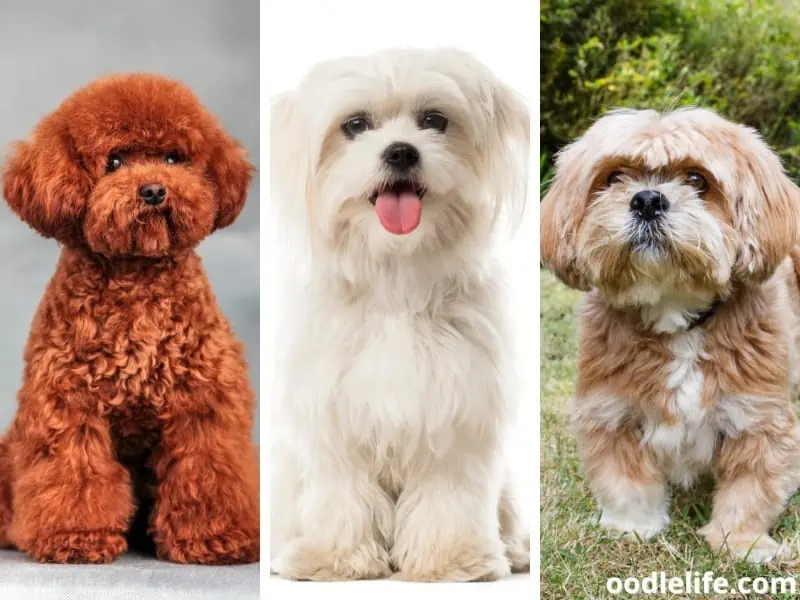
- Poodle: Both Standard and Miniature Poodles are intelligent, adaptable dogs that thrive in various environments. They handle separation well, even when their humans are at work.
- Maltese: Their small size and low-shedding coats make them excellent apartment companions, and they’re known for being easygoing when left alone.
- Lhasa Apso: With a regal history as watchful companions in Tibetan monasteries, these sturdy dogs are well-suited to alone time and don’t require much pampering.
Apartment-Friendly Dog Breeds
Looking for a breed that can harmoniously coexist with you in an apartment setting? These pups are perfect for city living and can handle time alone.
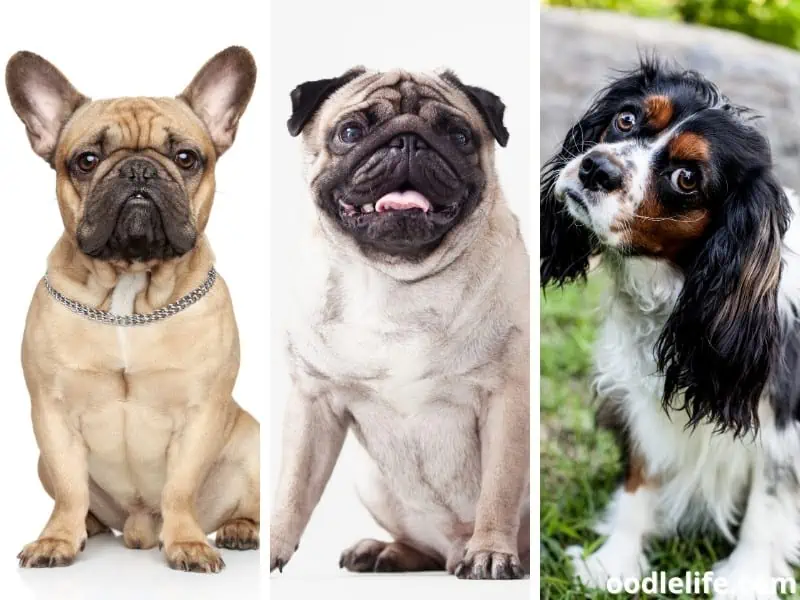
- French Bulldog: These laid-back, low-energy dogs fit right into apartment life, copious snort sessions included. They don’t need much exercise and won’t fret if you’re not home all day.
- Pug: Their small size and mellow nature make them perfect for apartment living. While Pugs love attention, they’re also happy napping away the day in your absence.
- Cavalier King Charles Spaniel: Adaptable and affectionate, these little pups adjust well to apartment living. Although they enjoy quality time with their humans, they tolerate alone time as well.
Remember, every dog is an individual, and training, socializing, and proper care can play a huge role in how well they handle time alone.
Highly Affectionate Family Dogs
If you’re seeking a pooch that’s both highly affectionate and a consummate family dog, there are several breeds with low separation anxiety that also make wonderful additions to the household. These dogs tend to be low energy, which means they’re content with spending quality time indoors snuggling with their favorite humans.
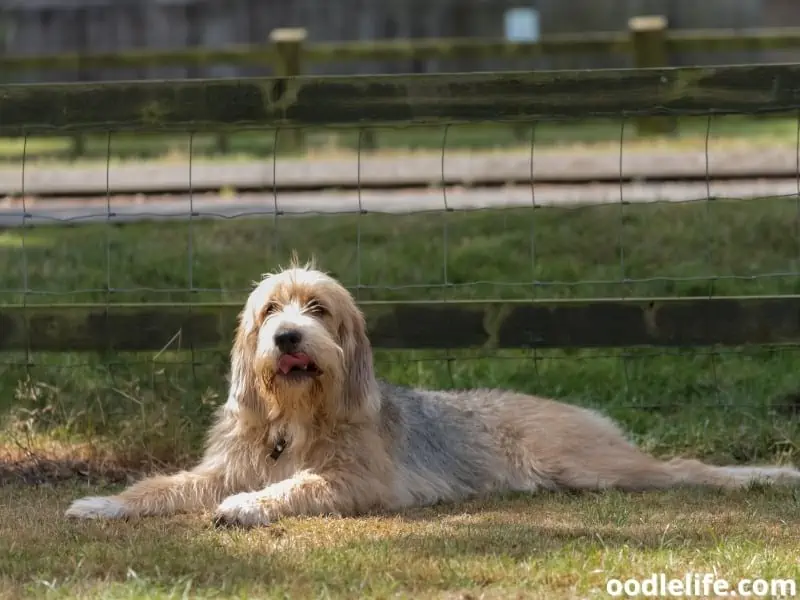
For example, the English Foxhound is known for its gentle and friendly temperament. These dogs have a regal appearance, but don’t let that fool you! They’re just as happy rolling around on the living room floor with the kids as they are taking a leisurely stroll outside.
Another breed that fits the bill is the Otterhound. These unique-looking dogs have a cheerful personality and are perfect for families who appreciate an even-tempered pooch. Otterhounds are like a fluffy friend that showers you with unconditional love, just when you need it the most.
Some other affectionate family dogs with low anxiety levels include:
- Greyhound: Hailed for their speed, these dogs are surprisingly low energy when at home and love a good cuddle.
- Basset Hound: Don’t let their droopy faces fool you – they’re overflowing with affection.
- Lhasa Apso: Small in stature but big in heart, this breed enjoys being close to their family members.
- Pug: With their iconic wrinkly faces, pugs are charming companions that adore affection from their families.
It’s important to remember that every dog is unique, and energy levels and separation anxiety may vary even within specific breeds. However, these examples provide a solid starting point for anyone in search of an affectionate and low-anxiety canine companion.
So, the next time you’re looking for a loyal and loving canine sidekick, consider one of these highly affectionate family dogs. As you share your home and heart with them, they’ll provide you with endless love, laughter, and a lifetime of memories!